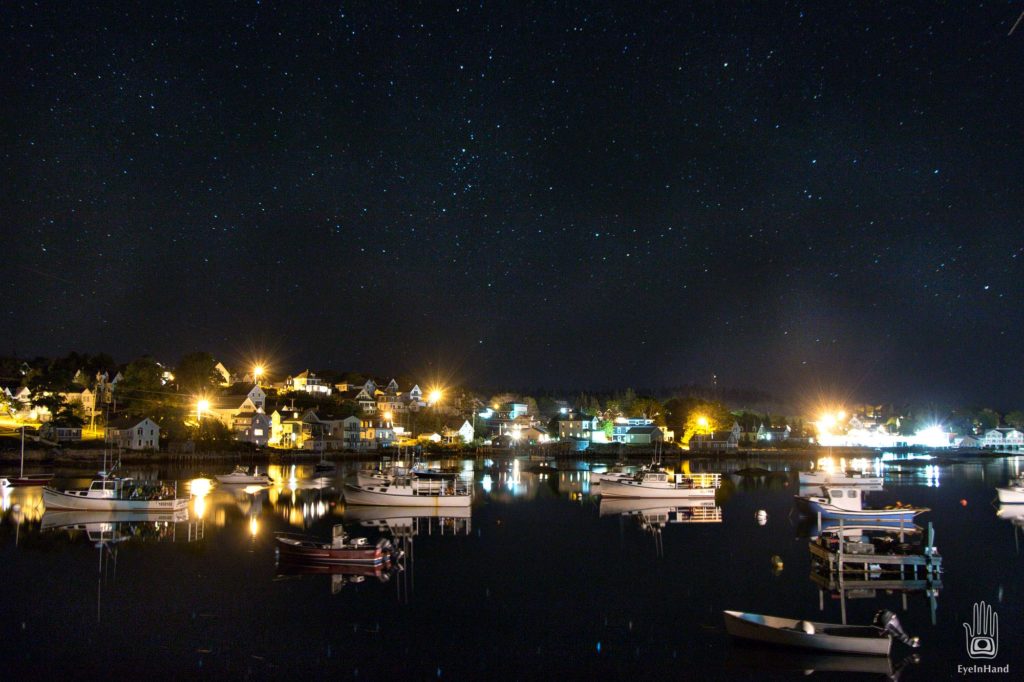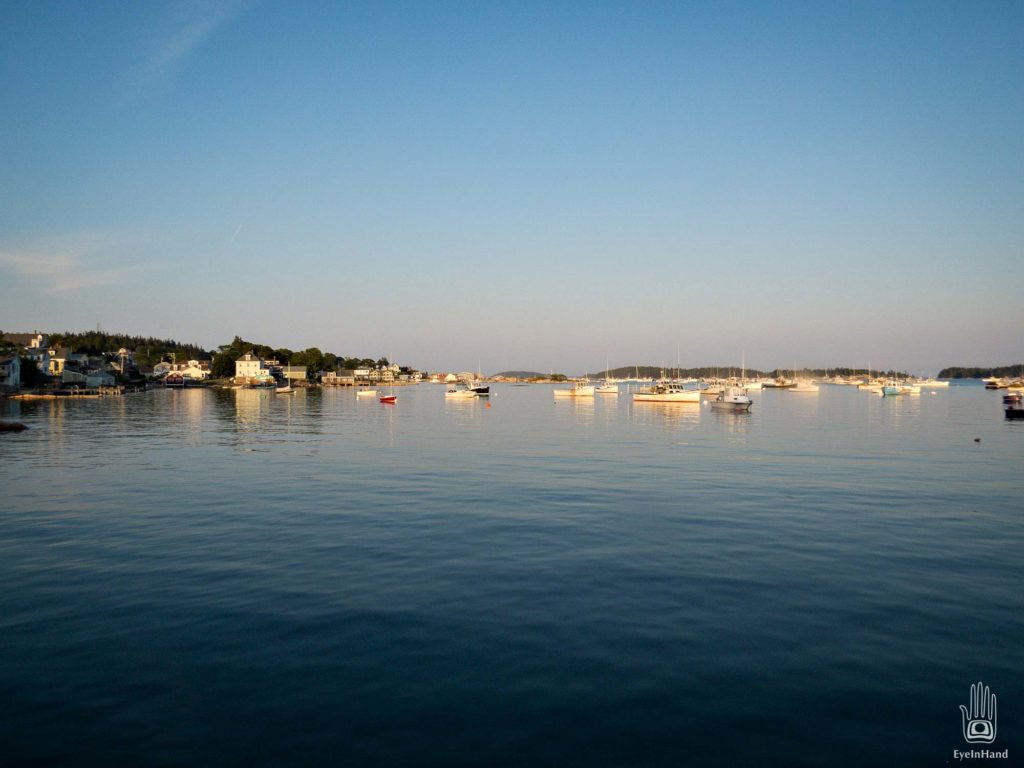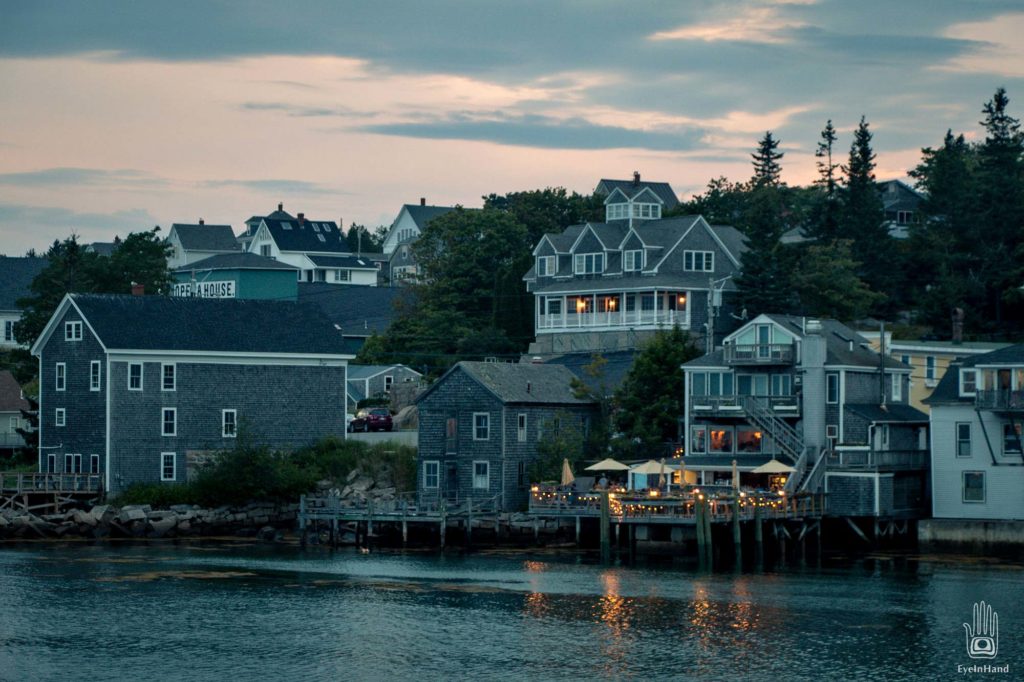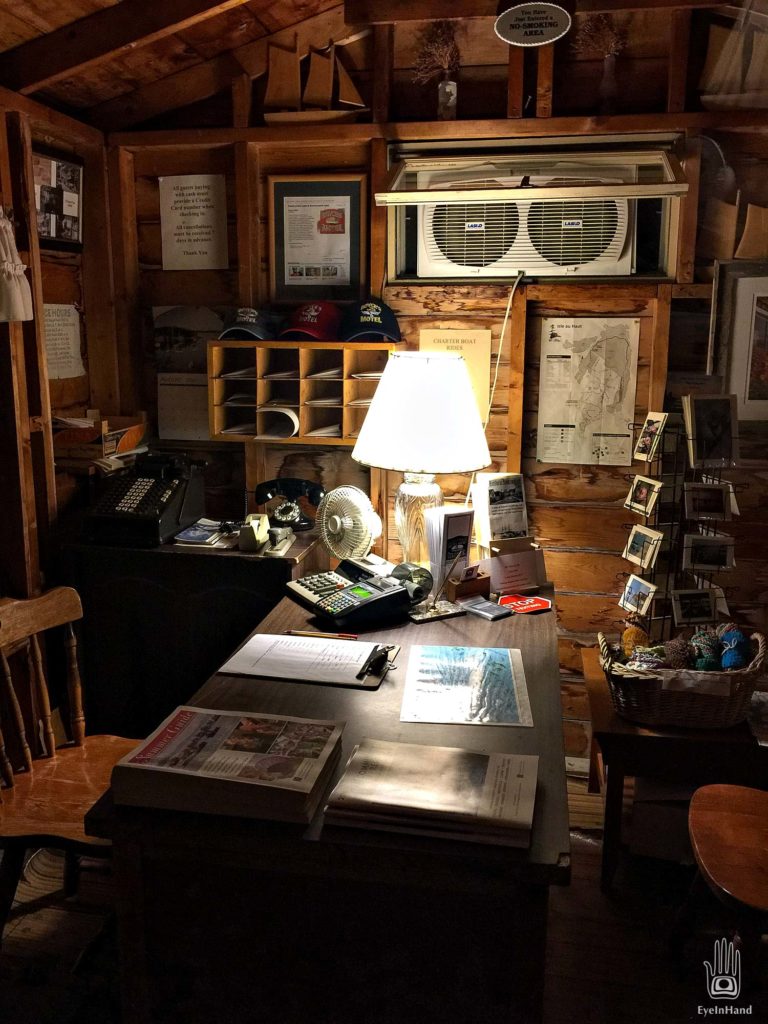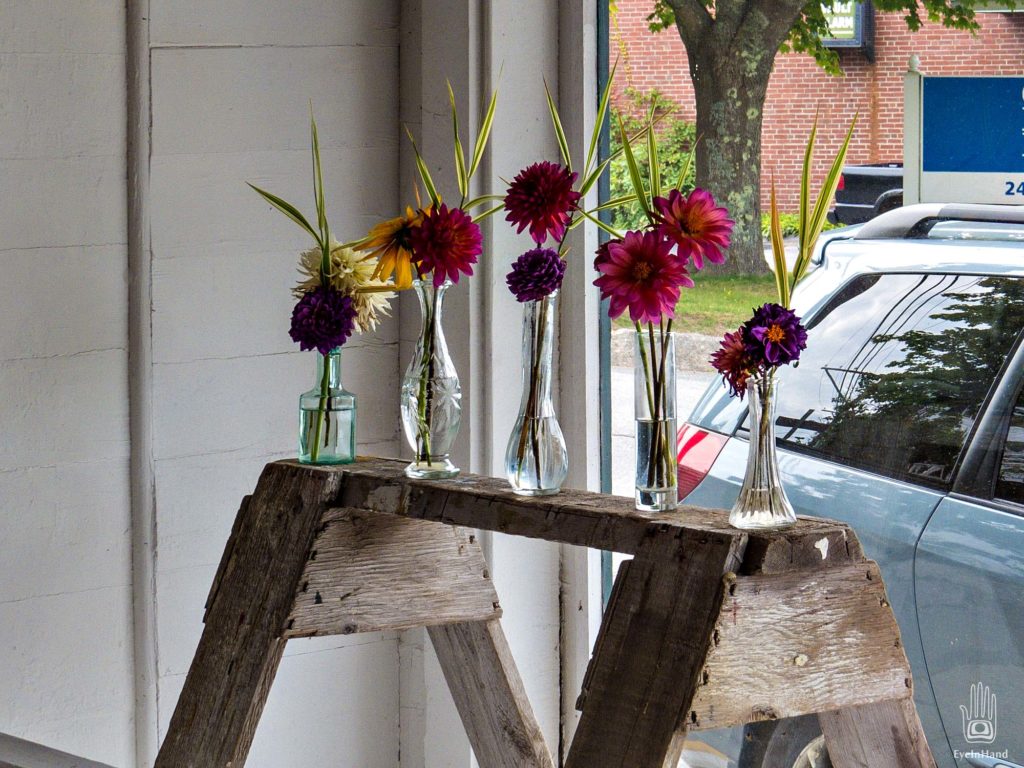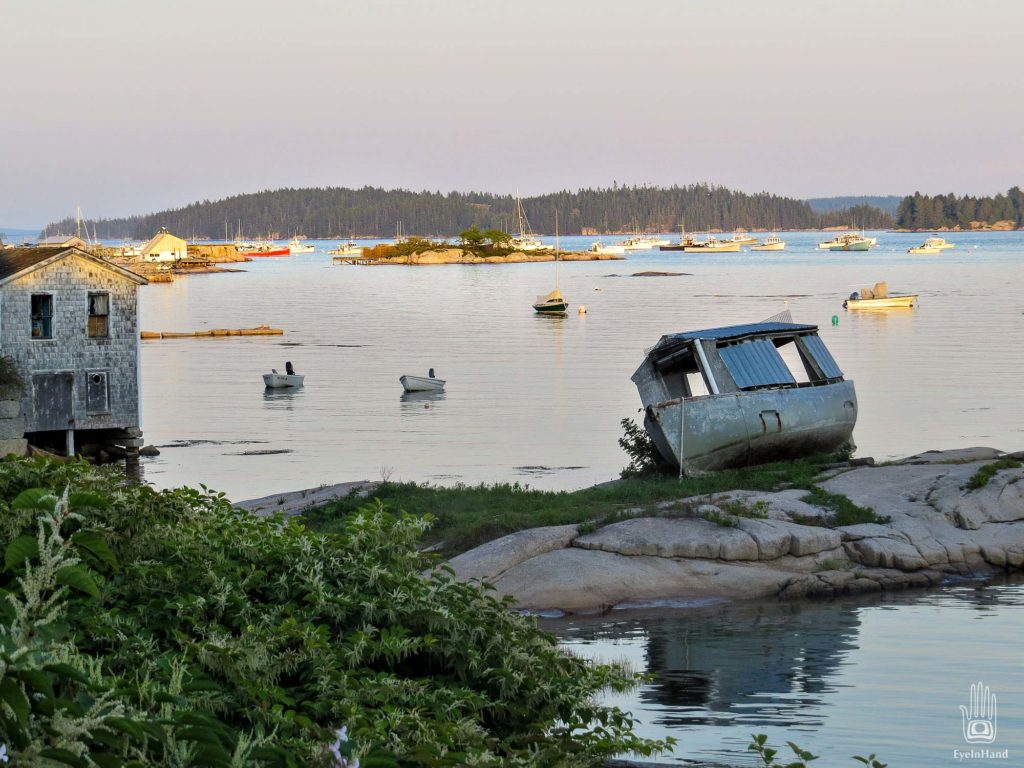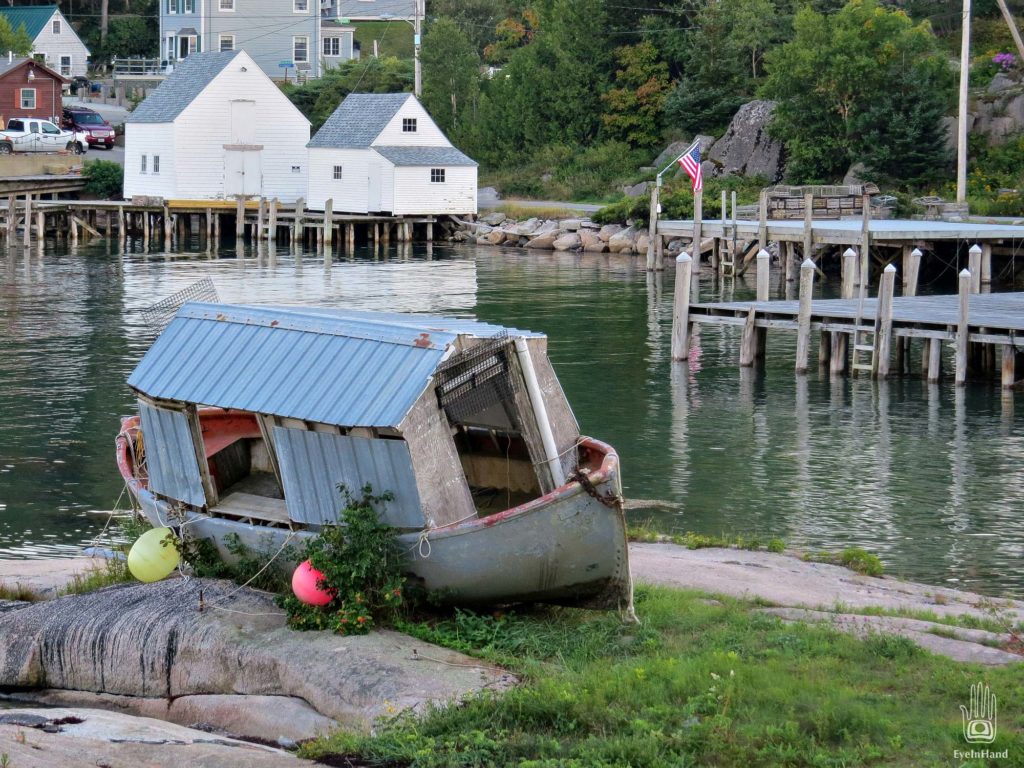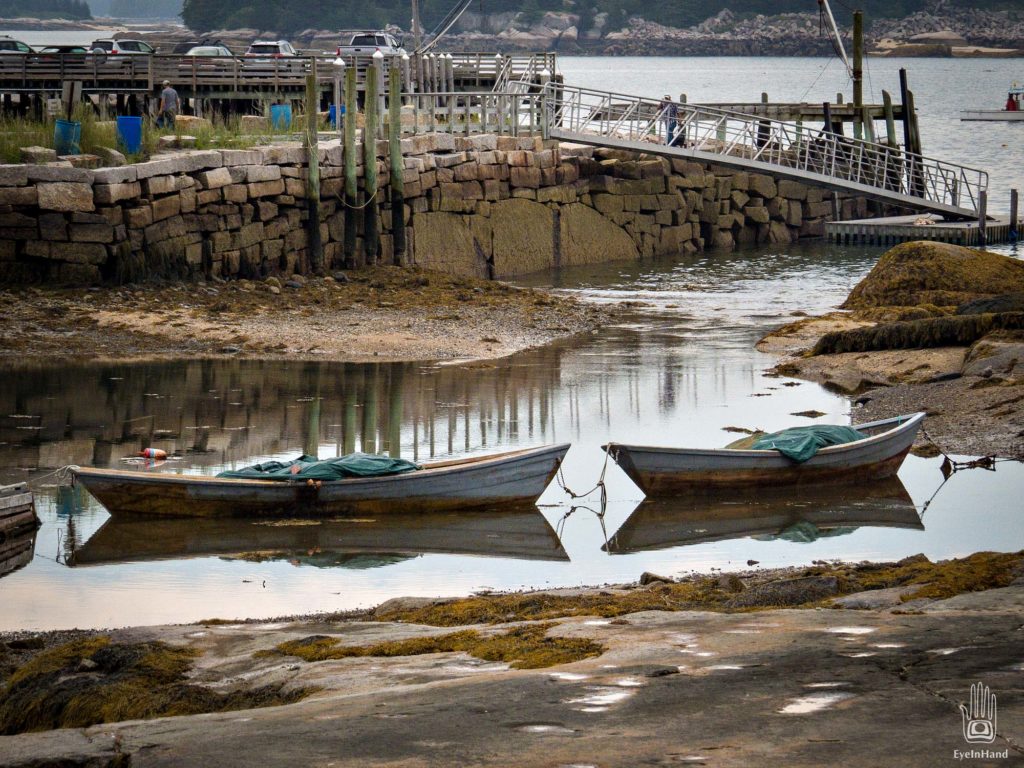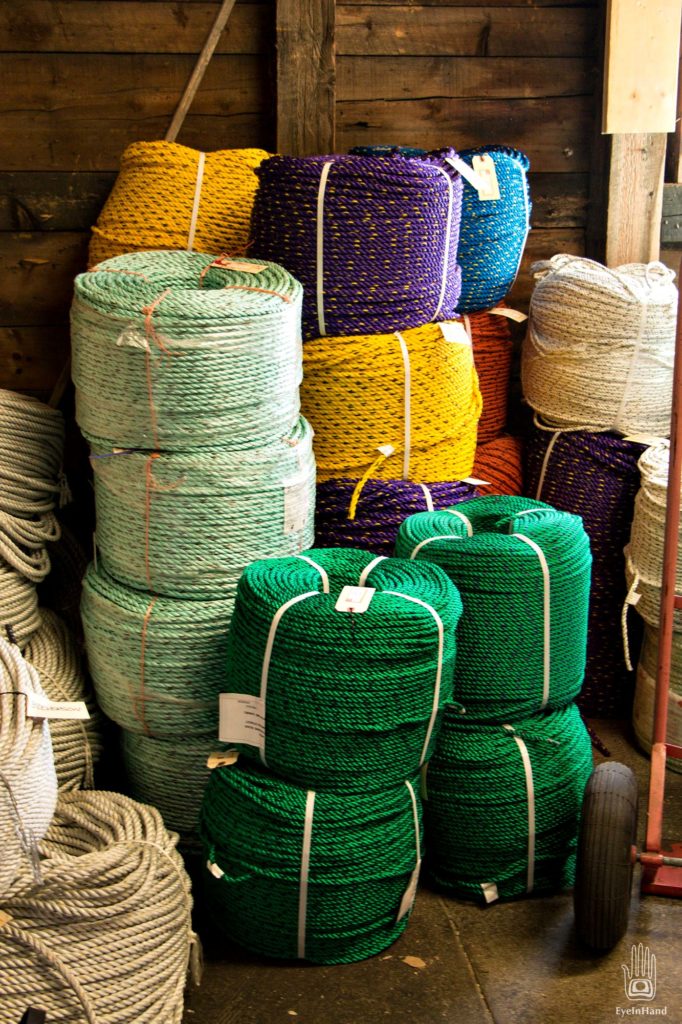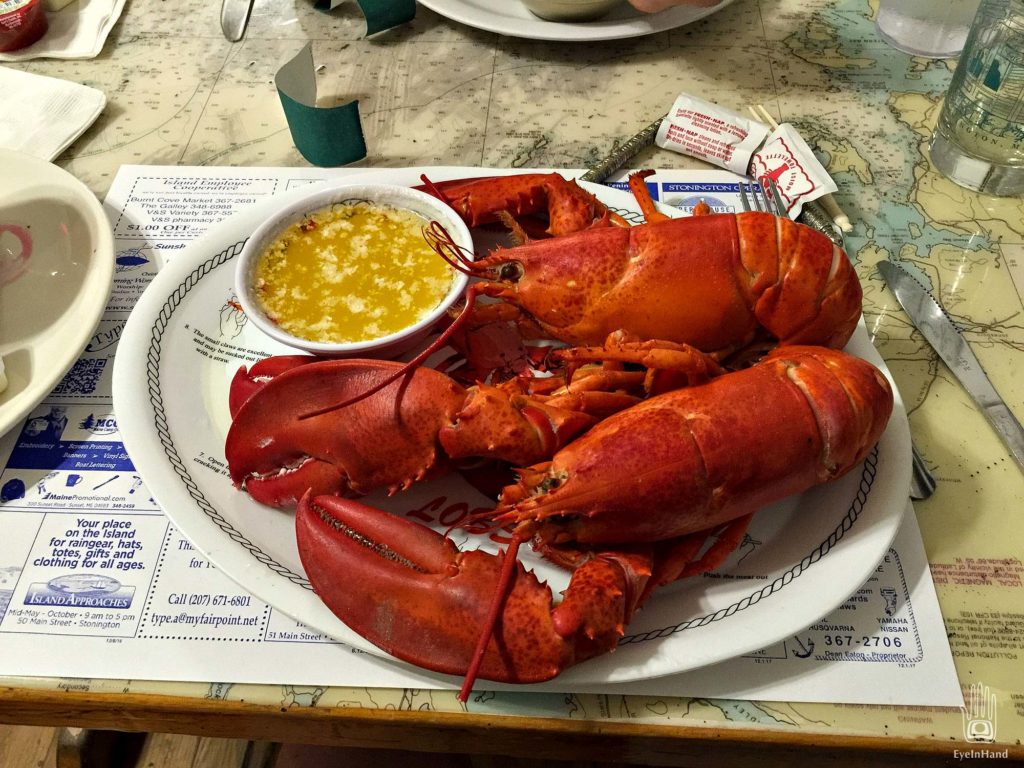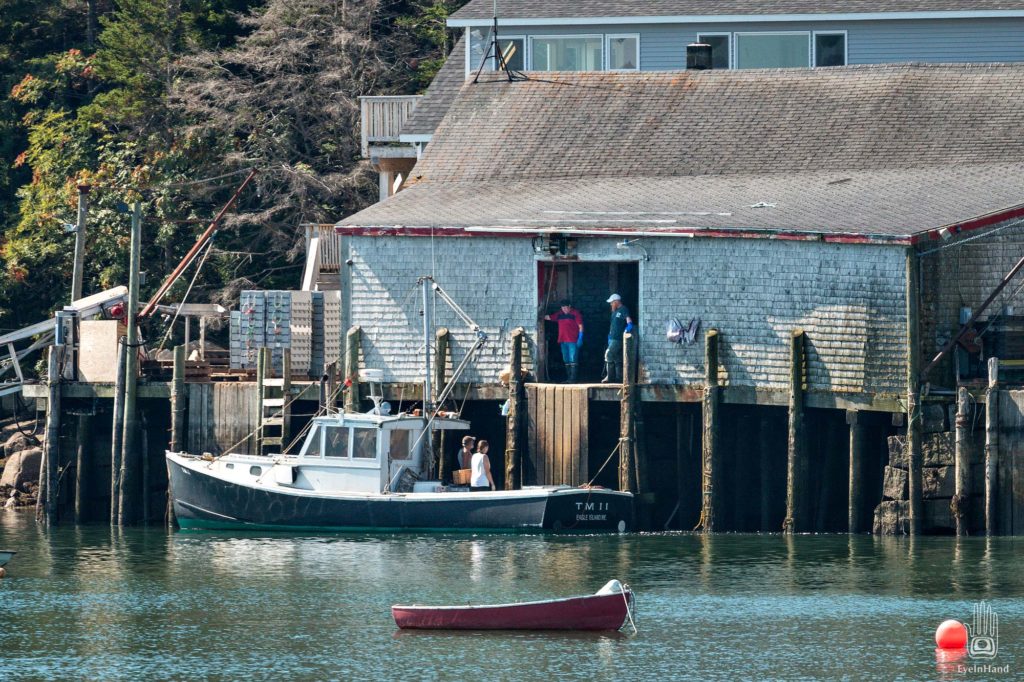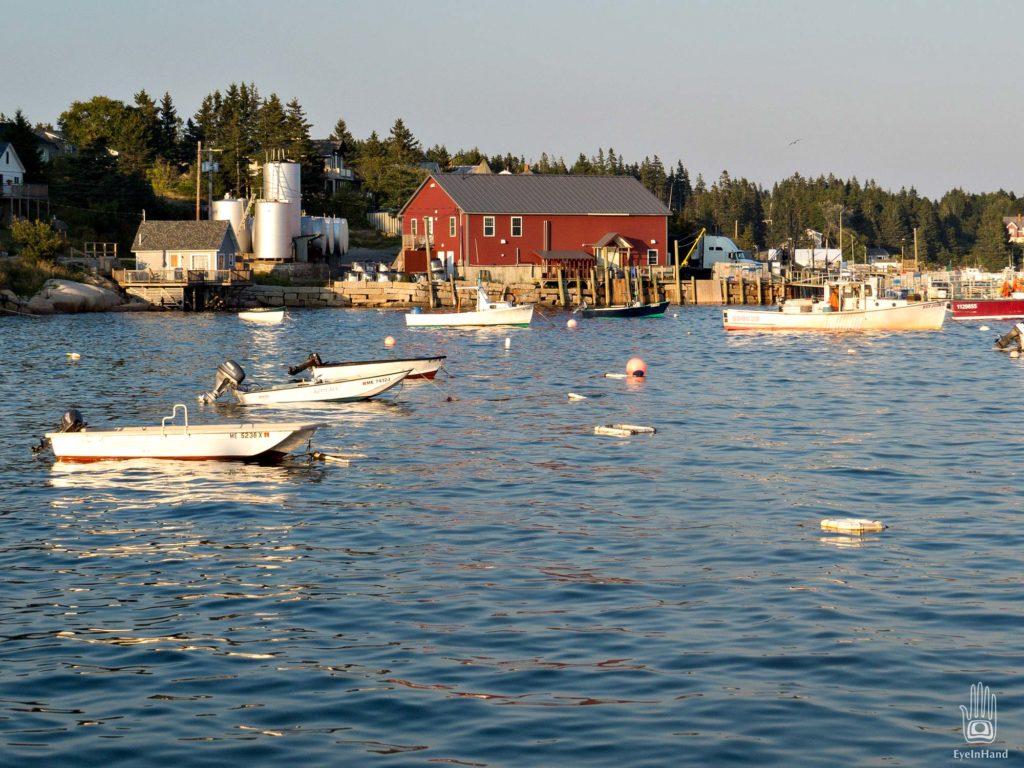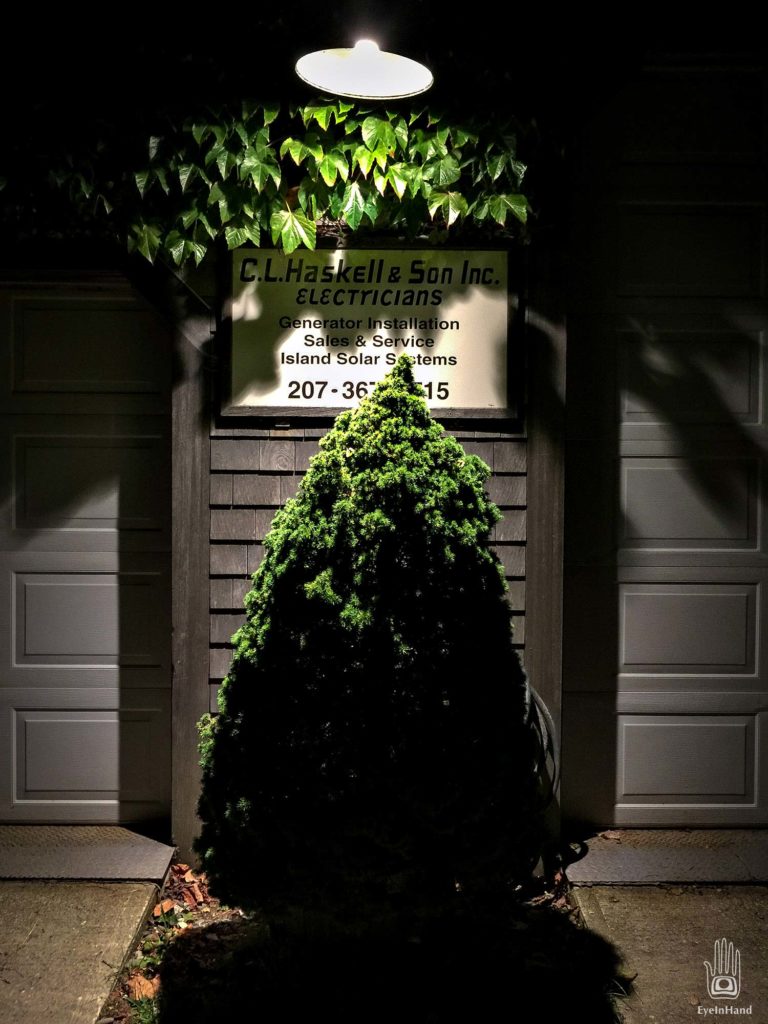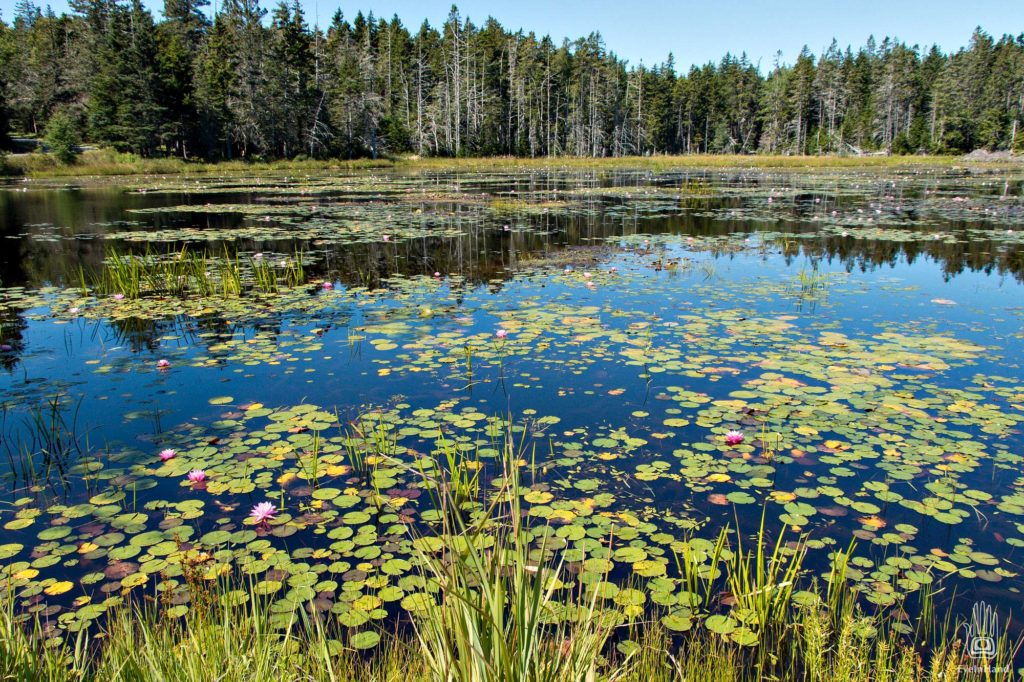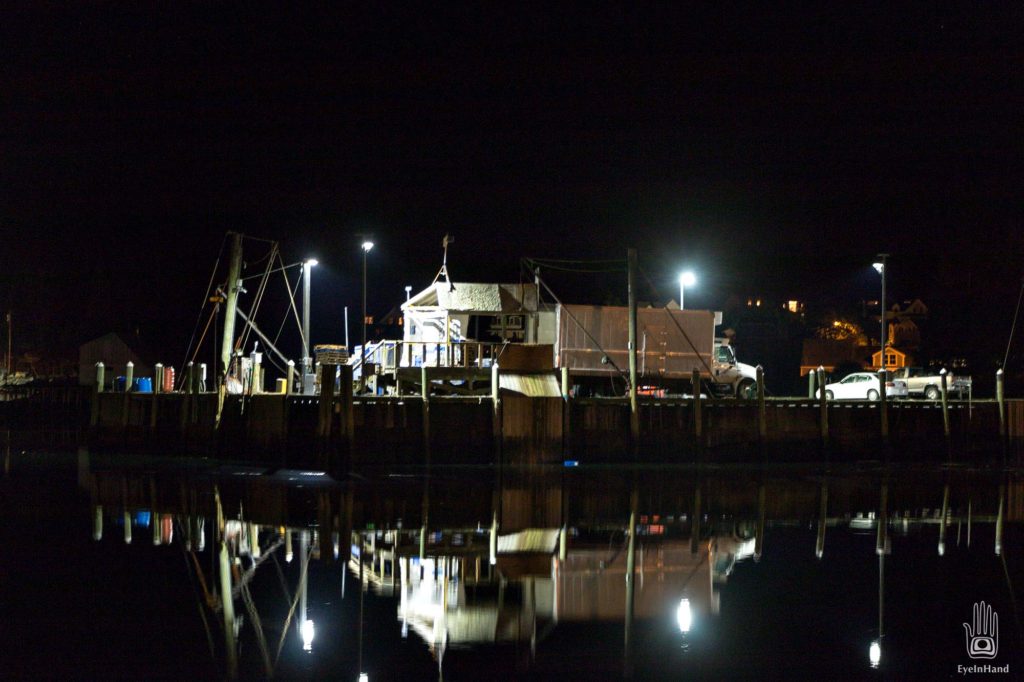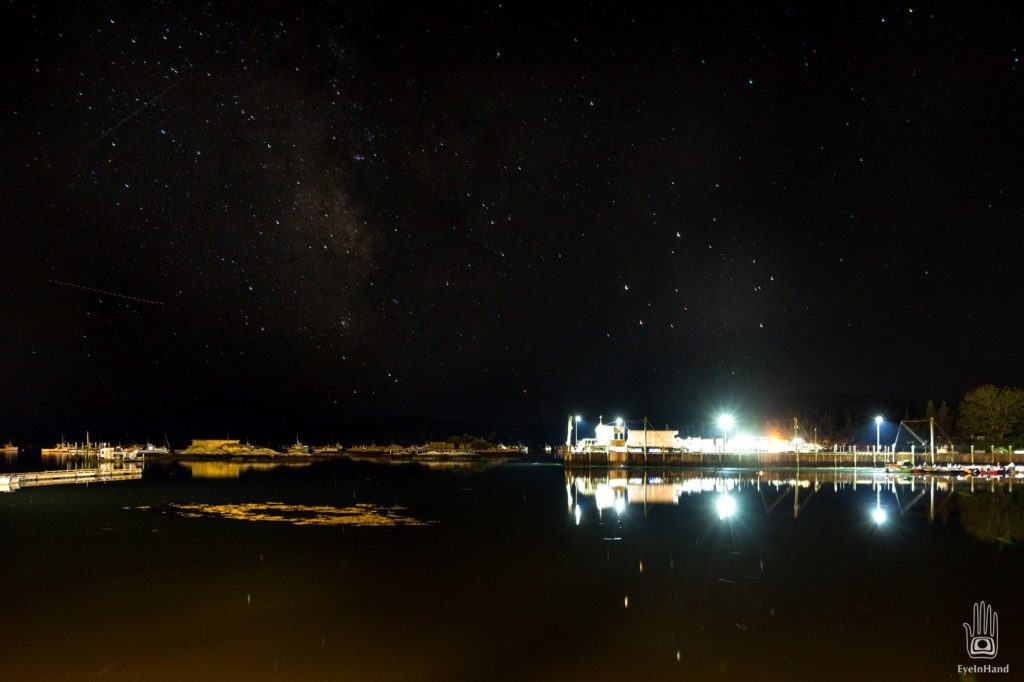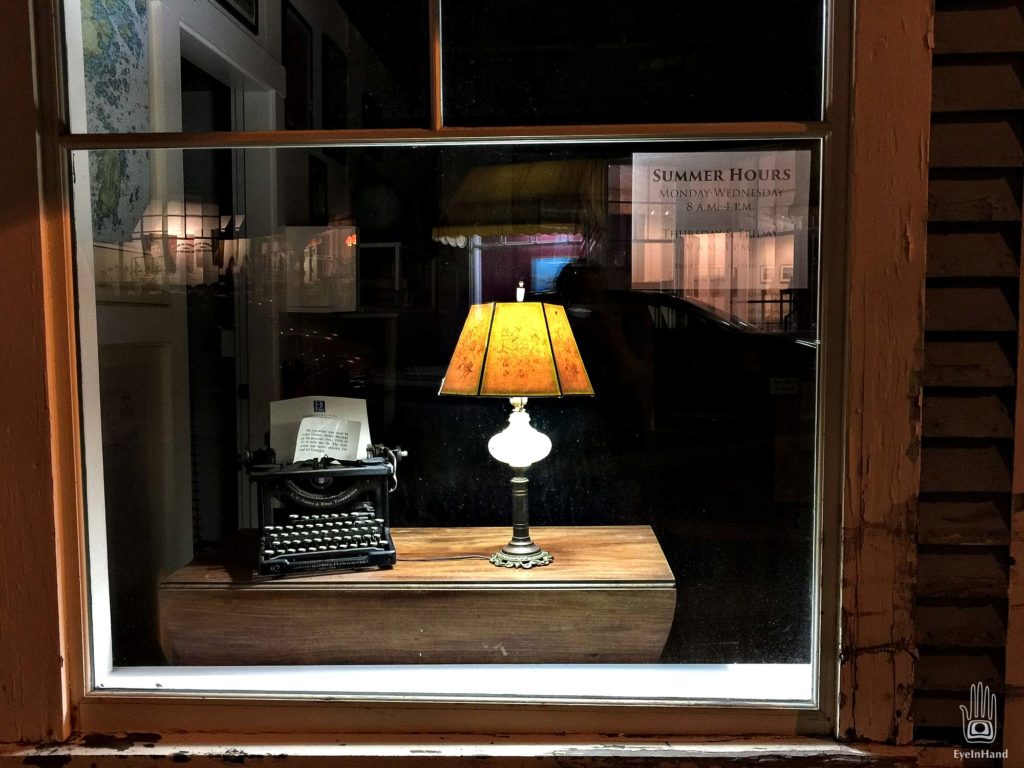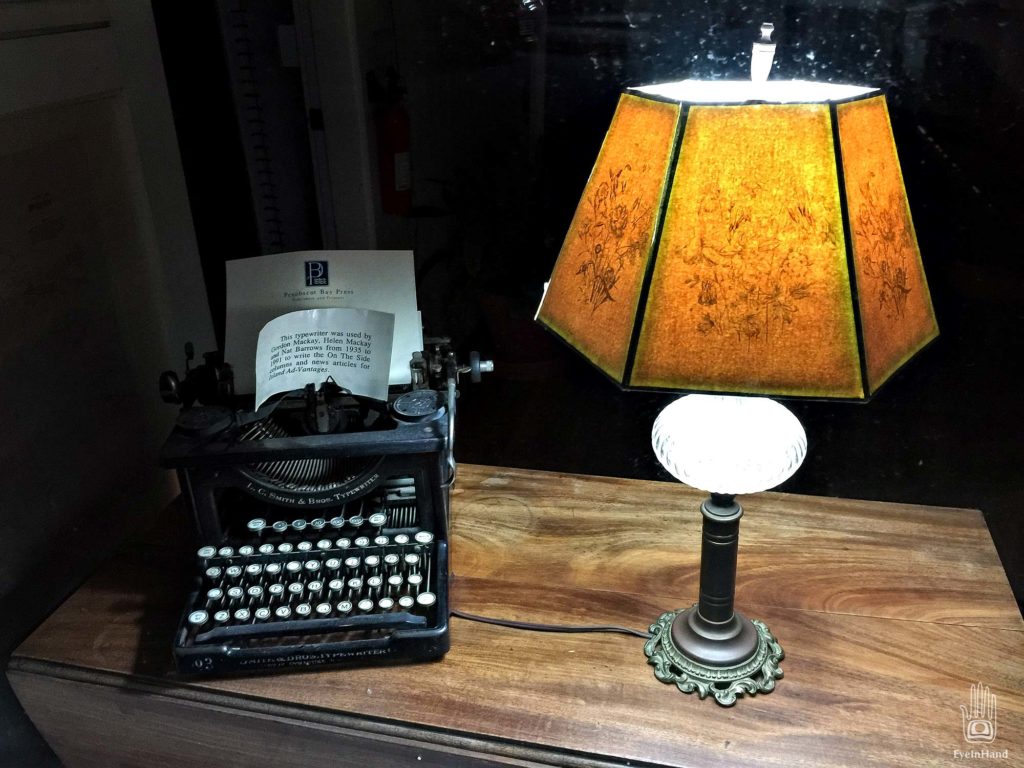Stonington Harbor, Maine
It got dark fast, and chilly for August, and we have hunger. It’s only a mile to Stonington along the shore, past lobster pounds in the protected cove behind Moose Island, past hundreds of lobster boats anchored in the harbor – some new, most well used, some derelict. Houses climb up the hill above the harbor like skyboxes, new businesses in old rambling clapboard buildings line the waterfront.
We walk most of the way through town, only two or three blocks long.
There are two or three places to stay in town, as far as we can tell. There’s Boyces Motel, an old style New England inn with a little office out front, a cozy time capsule from the last century.
Innkeeper’s office at Boyces
Inn on the Harbor sort of clambers through several adjoining buildings, chins propped on the sidewalk with knees in the water. A nice B&B or two up the street. And only as many restaurants, each staking out a particular level of clientele.
Coffee shop on main street
The first restaurant we come to is Aragosta. It serves the upper end and comes highly recommended. Two women pull up in a shiny, black BMW and wrestle a crate of lobsters out of the trunk, waddle it down the narrow stairs to the kitchen. Perusing the menu from the sidewalk and peering through the windows, we decide that, still wearing our road grime and travel clothes, we aren’t quite dressed for an evening with the swells, and move on.
A half block down main street is the Harbor Cafe, which will be a favorite for us while we’re here. They open early for breakfast with good coffee, are busy at lunch, and serve fresh seafood dinners without much fuss. The kind of place the locals go, with booths and tables in the bay window, art by neighbors and kids on the walls. A lobster dinner is $16, with fixins and sides. Also Haddock and Clams and Meatloaf. Fresh baked bread for the sandwiches and softball sized muffins for breakfast. But since they open early, and it’s already past 8, they are about to close tonight.
Old dories, still in use
At the far end of the town, out on the docks, is the Fisherman’s Friend. It sells bait and tackle, beer and gear, with a big restaurant and big windows looking over the docks, a little bar tucked in a corner. Truly a fisherman’s friend, with every need covered. It’s been around a long time, a fixture of the town (in fact, I see as I write this that it has finally changed hands). It straddles that line between a place you could take mom and the kids, and a place you could go for a fight if you wanted one. We feel right at home.
Lobster trap warp at the chandlery
I get my first of many lobster dinners – 2 pounds! – which here in Maine is cheaper than steak. A lot cheaper. Two lobsters, salad, potato, broccoli and a 24oz draft beer sets me back only $22. Yes, the beer mugs are 24oz – working man size. Fist fight size.
Stonington is a working harbor, and long a holdout as a blue collar town. One of the reasons we came here. There’s a tippy equilibrium between the tourist trade and the fishing trade. They compliment each other. Summer, high tourist season, is the slow time for lobstering. As the tourists get swept out by the first cold winds, the lobster season kicks in. You get the feeling the two groups tolerate each other more out of necessity than choice. An economy sometimes makes strange bedfellows, but here one doesn’t necessarily contradict the other.
Stonington, as its name suggests, got its start as a massive stone quarry. Deer Isle granite was used in most of the major monuments between Maine and Washington, DC. A commercial quarry still operates out on Crotch Island, visible from the harbor. In the early part of the last century, lobster was a trash fish. It was something you fed to inmates in prison. Or you chopped it up for chum or the dogs. Not much money in it.
Around the time the granite began to play out, though, so did the lobster. This sudden scarcity made lobster a novelty, with the unique benefit that, unlike the granite, it was a renewable resource. Before long, lobster prices rose and lobster became king. Stonington is now the largest, busiest, and most productive lobster port in North America – often doubling the nearest second place. In Maine alone, value of the the lobster catch in 2016 was over $600 million. That’s a lot of crustaceans.
Deer Isle Thorofare Light, on Mark Island.
Foghorn near water to the right.
According to James M. Acheson in The Lobster Gangs of Maine, (1988, still the definitive work) each harbor along the Maine coast consists of a tribe or gang of local fisherman, unique to that harbor. Each harbor gang operates as a kind of loose gild, which serves to protect their territory and the financial interests of the members. Sabotaging the gear of interlopers is not uncommon, and in extreme cases there are incidents of physical violence.
Access to fishing grounds is limited via licenses and restricted by an unwritten code of seniority and “local cred”. Of necessity, the fishermen have overcome their fierce independence and formed coops to manage the affairs and market prices for all members. This is distinct from the way the Chesapeake Bay watermen work, much to their detriment, as wholy independent contractors, each left to their own devices. By all accounts, the Maine lobster fishery is one of the best managed in the industry.
Contrast this with cod, for example. Oddly enough, the collapse of the North Atlantic Cod fishery in the mid-1990’s lead to conditions that turned lobster fishing into a kind of wild, but actively managed seafood aquaculture. Cod are bottom feeders, and what they feed on is baby lobsters. Once the cod were all gone, there was nothing to left to eat the lobsters, except people.
So by managing their harvest and protecting their territory, the fishermen have become lobster farmers. In one study, over 80% of the diet of wild lobsters is actually lobster bait from the millions of lobster pots along the Maine coast! By setting their traps, the fishermen fertilize their crop all Spring and Summer, then harvest in the Fall.
Fascinating.
Ice House Pond on the edge of town
After dinner we walk back through town, now quiet except for the sound of water slapping the docks, anchor lines creaking. A big starry sky wheels overhead. Out on the coop dock a truck backs in, is loaded with crates of lobsters, and drives off.
Stars over Stonington Harbor
One of the old buildings on the corner, with views up and down the street and over the harbor, is the old newspaper office. Lights on in the window display an old typewriter there. The paper in the bail reads:
This typewriter was used by Gordon Mackay, Here Mackay and Nat Barrows from 1935 to 1991 to write the On The Side columns and news articles for the Island Ad-Vantages.
I bet it did.


